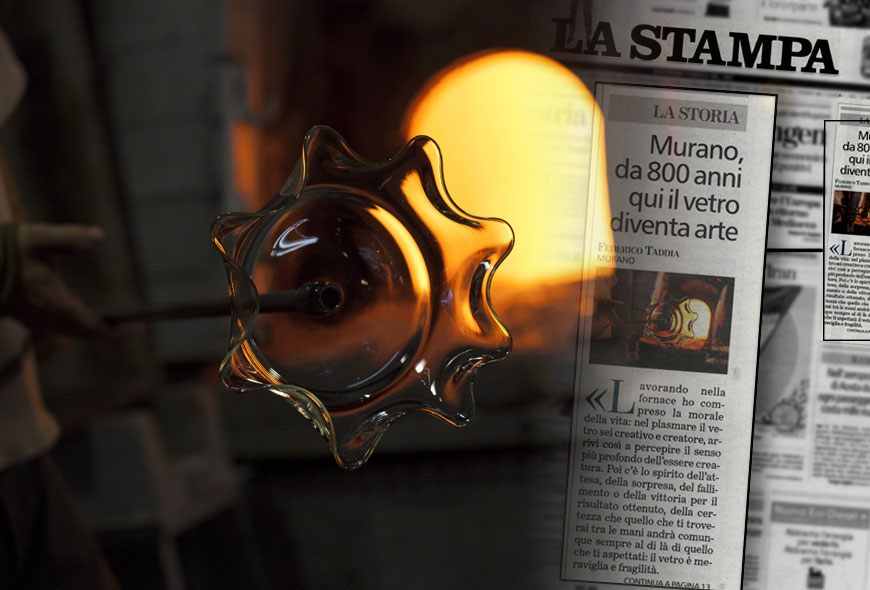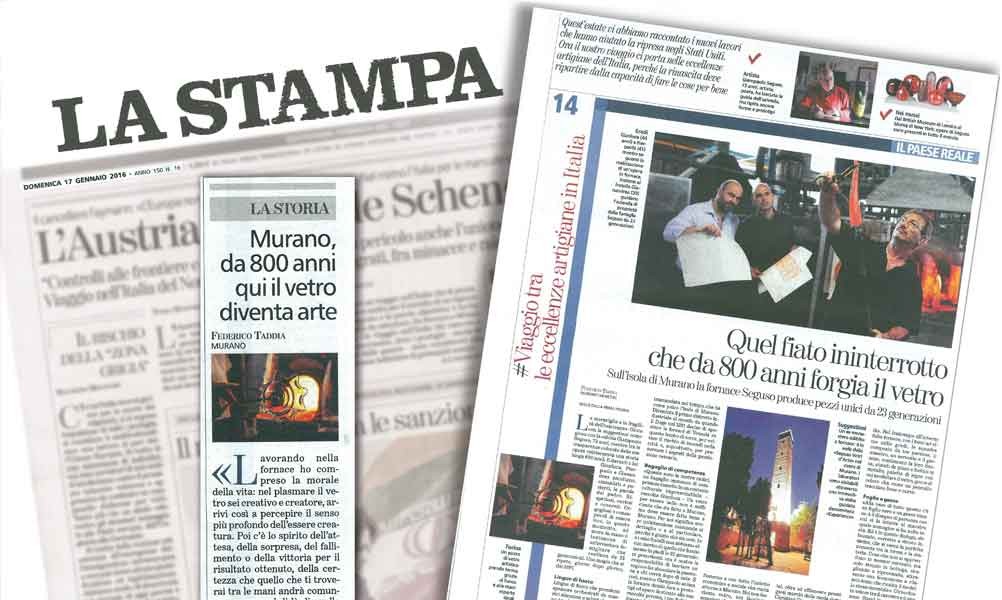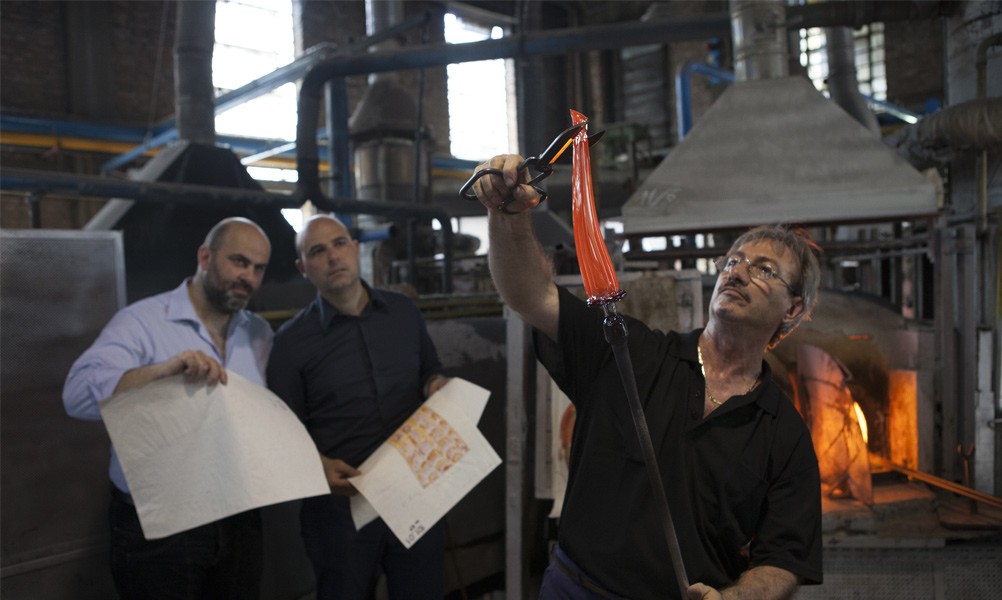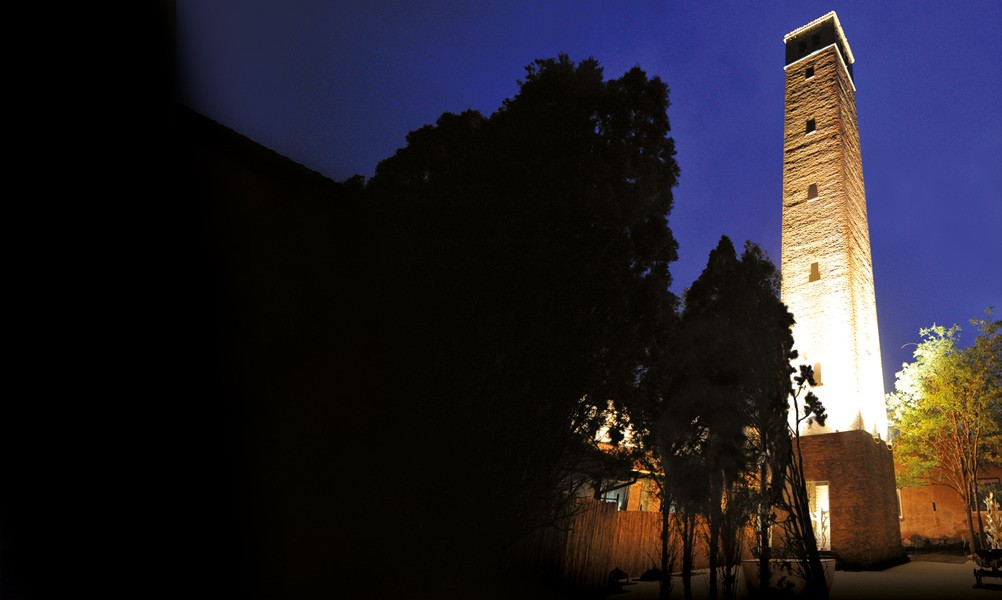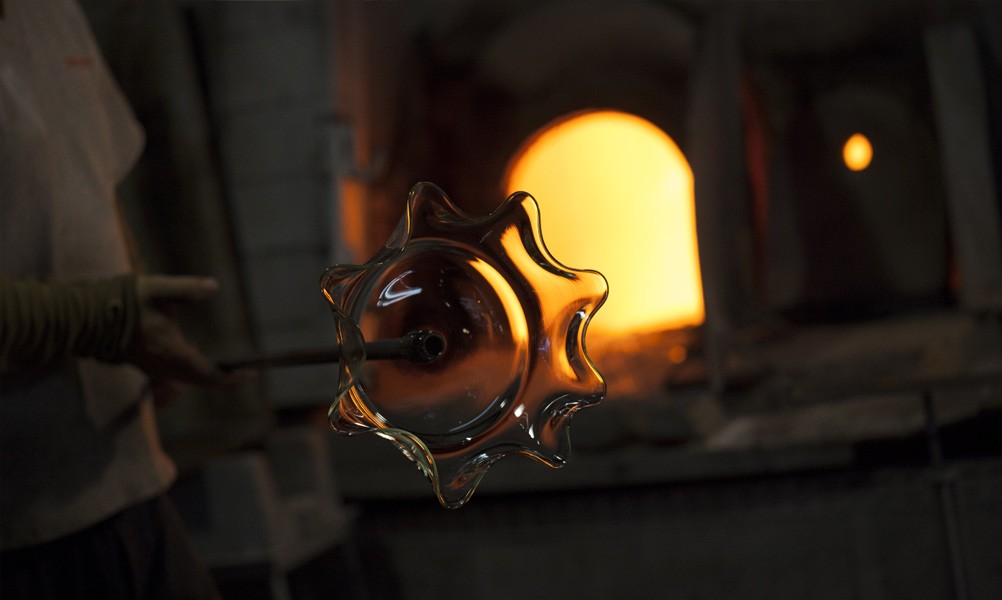The Seguso brand and family were featured in the Italian newspaper, La Stampa, this weekend. La Stampa is distributed throughout all of Italy as well as other European countries, and is also one of the oldest newspapers in Italy. Below is the English translation of the article:
AN UNINTERRUPTED BREATH FOR 800 YEARS FORGES GLASS
On the island of Murano the Seguso furnace produces unique pieces for 23 generations.
by Federico Taddia
Murano – “Working in the furnace I understood the morality of life: in the shaping of glass you are creative and creator, thus arrives the deepest sense of being creature. Then there is the spirit of expectation, surprise, the failure or victory for the result obtained, the certainty that what you find in your hands is always beyond what was expected: glass is wonder and fragility.
The wonder and fragility of existence.” Giampaolo Seguso, 73, plays with suggestions as he plays with sand, while among the colored transparencies of his work he reinterprets 600 years of history. And before him, Gianluca, Pierpaolo and Gianandrea listen, fascinated and patient, the words of their father. Respectful, curious and concrete. Proud and aware, in this moment to have the baton in hand for a family adventure that continues on for 23 generations. A magic that is repeated day after day, since 1397.
Tongues of fire taking thickness orchestrated by silent and shy maestros that can transform into art the delicate balance between temperature, gravity and centrifugal force: glowing heads that rotate from long metal rods, they rise and fall, wandering between furnaces. Rods into which blowing, sometimes gently and sometimes forcefully, to tame the molten glass and accompany it to the desired shape. An ancient dance, handed down over time, which has as its stage the island of Murano. When the Doge in 1291 decided to move the furnaces of Venice onto this strip of land, to avoid the risk of fires in the city and, above all, to preserve the secrets of glass production, Murano became the first industrial district in the world.
“These are our roots, an immense wealth of expertise incorporated into a cultural imperative – tells Gianluca – Glass to be beautiful, it is not enough that it is made in Murano, but it must be done well in Murano. For us it means having an obsessive attention to detail and the particulars, because it is right to do so. My brothers and I take no credit for what the 22 previous generations have put together: Now it’s our responsibility to leave a mark and to make bloom the passion for those who come after us.” And so, while Giampaolo enlivens the furnace giving light to prototypes and works intended for his private collection, the three children translate the inspirations of their father, but not only in business. Revolutionizing the concept of business. “It ‘s true, we opened the doors of our furnace, through emotional visits called the “Experience “. It is a total immersion into this dimension, where each of the 40 employees feels to be fundamental element, and have the opportunity to tell and invigorate themselves in the pleasure of doing one’s best. Sharing the experience with the outside world and with it the induced economic and social centers on Murano. We do not make glass, we do emotions that are represented by the glass, but the first to excite must be us.” Spectacular chandeliers and vases with soft lines and unpredictable, decorative items such as doorknobs and tables furnished with transparent feet, objects of classic and refined design and minimalist glasses: products signed “Seguso Vetri d’Arte” are part of the permanent collections of more than 100 museums around the world, are found in royal houses, luxurious residences, theaters and hotels, as well as supporting prestigious fashion brands like Christian Dior and Fendi.
Thanks to the imagination of Pierpaolo, the Creative Director, and the development capabilities of Gianandrea and Gianluca, who identified the four pillars that support the engine of the family business: integrity, sustainability, craftsmanship and beauty. “Beauty is not only aesthetic, but mainly ethical – explains Gianluca – The effort is to understand the sense of beauty: keeping the ability to wonder is the only antidote to mediocrity.” Meanwhile inside the furnace, with the ovens over a thousand degrees, the teams of three people, the “maestro”, an assistant and the apprentice, continue their dance, helped by forceps and metal scissors, wooden pallets with which to model the glass, drops of color just as a paintbrush paints lines and curves.
“At the base of all of this is a black sheet and white chalk: it is the starting design with where you express to the maestro what image you have in your head. It is in this dialogue, sketched, corrected and revised together, in which you look for the perfect harmony between form and matter. Things you do not learn in any manual, but just by standing in the workshop, trying again and again, through a slow-release training which follows the model of the Renaissance.” A quick glance between the master and the apprentice. Sounds in an incomprehensible dialect. Trajectories known by heart, with glowing balls like magic, at the very instant in which you think to have understood what is being transformed, becoming another. “My father was a researcher and therefore studied the technique – said Giampaolo while, as he whispers to me, seeks to dress beauty on a stone glass -I am an explorer: I understand the problem but I do not care, I want to be amazed. I’m a dreamer, the visionary suffers, the dreamer never. And this is a vital difference. “


